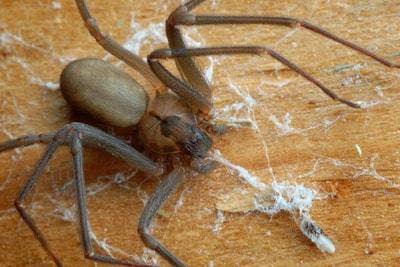
Pics of Brown Recluse Bites: A Detailed Look
When it comes to identifying and understanding the effects of brown recluse spider bites, visual evidence can be incredibly valuable. In this article, we delve into the various aspects of brown recluse bites, providing you with a comprehensive guide to recognizing these bites through pictures and descriptions.
What is a Brown Recluse Spider?
The brown recluse spider, also known as the fiddleback spider, is a venomous arachnid native to the United States. These spiders are typically brown with a distinctive dark brown violin-shaped marking on their back, which is where they get their name. They are often found in undisturbed areas such as basements, attics, and crawl spaces.

Identifying Brown Recluse Bites
Recognizing a brown recluse bite can be challenging, as the symptoms may not appear immediately. However, here are some key indicators to look out for:
| Sign | Description |
|---|---|
| Wound | A small, red or purple bump that may be itchy or painful |
| Wheal | A raised, red area surrounding the wound |
| Blister | A fluid-filled blister that may form around the wound |
| Ulcer | A deep, open sore that may develop after a few days |
| Systemic Symptoms | Severe pain, fever, chills, nausea, and vomiting |
It’s important to note that not all brown recluse bites result in severe symptoms. Some individuals may experience mild reactions, while others may have no symptoms at all.
Pictures of Brown Recluse Bites
Below are some pictures of brown recluse bites to help you identify the characteristics of these wounds:



These images show the various stages of a brown recluse bite, from the initial bump to the formation of a blister and ulcer.
Preventing Brown Recluse Bites
While it’s impossible to completely avoid encounters with brown recluse spiders, there are steps you can take to reduce your risk:
- Keep your home clean and clutter-free to discourage spiders from nesting.
- Seal any cracks or gaps where spiders may enter your home.
- Inspect your clothing and bedding before use, especially if they have been stored in undisturbed areas.
- Be cautious when handling items found in dark, undisturbed areas.
Seeking Medical Attention
If you suspect you have been bitten by a brown recluse spider, it’s important to seek medical attention promptly. While most bites are mild, some individuals may require treatment for severe reactions. Your healthcare provider can assess the severity of the bite and recommend appropriate treatment.
In conclusion, recognizing brown recluse bites is crucial for timely treatment and prevention of severe reactions. By familiarizing yourself with the symptoms and pictures of these bites, you can take the necessary steps to protect yourself and your loved ones.







